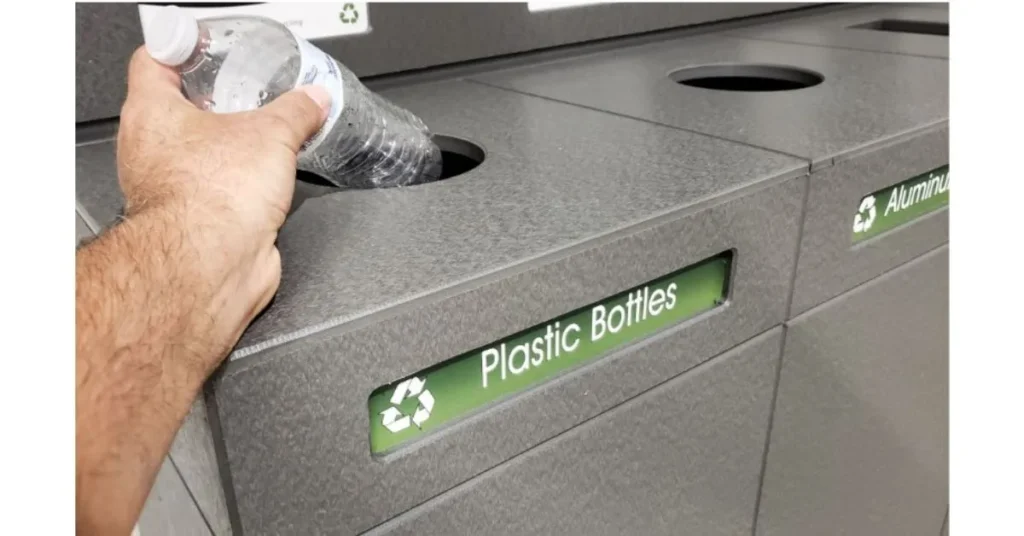Sustainability is now more than just a concern of the dining sector; it is now an essential pillar. With the rising pressure on restaurants to tackle environmental issues, the focus is now on restaurant waste reduction. In order to overcome this problem, company owners are resorting to waste reduction techniques and green solutions.
From reducing food waste to effective management of packaging as well as the optimizing of dumpster rental in Los Angeles, all these initiatives are eco-friendly not only from the consumers perspective as they align swimmingly with the regulatory aspects of it.
Here, we delve into the exploration of three tenets of this framework (Prevention, Recovery, Recycling) alongside additional ways your restaurant business can become more eco friendly, with the aim of reducing food waste particularly focusing on food scraps, packaging, and the use of dumpster rentals.
Contents
Eco friendly restaurant waste reduction strategies
Sustainable restaurants are in the forefront of searching for solutions to reduce ecological footprint and improve their financial results. Through utilizing green practices, such as preventing wastage, recovering food items, and recycling, restaurants can lower their costs, reduce food wastage, and do their bit to preserve the planet. Let’s look at these 3 pillars and a range of other strategies to make the sustainability of the restaurant more efficient.
Prevention
The prevention is aimed at early actions that decrease waste production as much as possible. Following are some effective strategies for restaurant waste reduction.
Menu Planning
Structure menus according to the most optimal ingredient usage so as to not have unnecessary waste. Include versatile ingredients that can be used in many dishes so that leftover perishables don’t go to waste.
Portion Control
Introduce portion controlling techniques to minimize plate wasting. Train staff to serve normal portion sizes and also to offer customers to customize their orders based on their appetite.
Inventory Management
Use inventory management software to control the ingredients used , review expiration dates, and evade overordering. Try to control inventory levels and purchase sufficient amounts of products, but not more than you would need to avoid excessive stock.
Buy in Bulk
Apart from the fact that shopping in bulk is a way less pricey than getting separate ingredients one by one, it allows us to also avoid the extra recyclable package that you bring home afterward. For each product you order comes with waste, so be careful of the limit, which you could make by ordering in bulk as well as paying attention to the packaging and working with the vendor that strives to reduce restaurant waste.
Recovery
Recovery has two components that divert surplus food by donation or used processes that facilitate food redistribution. Consider the following approaches to food recovery:
Donation Programs
Work together with the food banks, shelters and charities nearby. Then, give them the surplus food that is still edible. Develop protocols for safe food handling as well as for accommodation of all the required health and safety requirements through the way food is transported.
Feed Animals
Despite this, your disposed waste might not be safe to be distributed among people. So donate it to chicken and pig farms where it will be an excellent meal for their dietary needs. Innovative companies are finding methods to redirect restaurant food waste to farm animals. These environmentally friendly products are affordable to local farmers.
Besides, these extra benefits could increase the strain on the agricultural industry by amending the feeding rate requirement, as restaurants like you compost organic food. In a greenhouse, it not only saves you from having to deal with the process of separating food scraps from your waste stream, but also, with the problem of less weight to be carried away as the waste is lighter.
Recycling
Recycling comprises sending materials including packaging, paper and glass from the waste stream through recycling campaigns. Here are ways to enhance recycling efforts in your restaurant:
Composting
Establish a composting program and produce compost for appropriate purposes to divert organic waste such as food scraps, coffee grounds, and biodegradable packaging from landfills. Through this weekend composting project, employ the generated compost to fertilize garden or landscaping sites.
Waste Audits
Conduct periodic waste audits to detect the areas for recycling and the places to reduce the restaurant waste. Reviewable waste streams and also look for improvement areas while progressing towards the goals of sustainability.
Eco friendly waste reduction solutions for Food Scraps

Composting Program
A composting program would enable restaurants not only to divert landfilled organic wastes but also could create compost with high fertilizing potential. Trash like vegetable peelings, fruit scraps, and coffee grounds which can be composted in addition to provide knotholes for gardening or landscaping purposes to enrich the soil.
Food Donation Programs
Working with local food banks/shelters might be very helpful as restaurants can contribute surplus food to people in need and at the same time reduce restaurant waste. This way they are benefiting the society by supporting the community. The restaurant can donate boiling prepared dishes, quickly consumable perishables items approaching expiry and non-perishables goods.
Portion Control and Menu Optimization
Through ensuring the proper portion sizes as well as menu creativity, restaurants have the power to restrain food waste at the creation of waste. Practices incorporating options like using flexible portions, the use of seasonal items and creatively leftover food can all reduce food waste without detracting quality of food.
Sustainable Packaging Solutions
Biodegradable and Compostable Packaging
Selecting biodegradable or compostable packaging that is composed entirely from renewable material like plants and the bengali plastics, paper or board can dramatically reduce the impact of these disposable products on the environment. These materials disintegrate at a very high speed in composting systems and hence, they don’t contribute to pollution and shortage of resources.
Reusable Containers and Utensils
Customers are also encouraged to bring their reusable containers while ordering take outs and some restaurants also offer reusable choices in the eatery to cut down on disposable packaging. The introduction of such incentives like discounts or loyalty rewards for customers that bring their own containers can serve the purpose of motivating this sort of behavior.
Recycling Programs
The complete cycle for the package material could be drawn by setting up the recycling program.The glass, metal, paper, and plastic from these materials are connected directly to the new products. Simultaneously, introduction of segmented and circled recycling bins and staff training for this purpose are vital for the implementation of recycling programs.
Read More: DETAILED REVIEW OF TOXIC WASTE
Dumpster Management Best Practices
Proper Segregation of waste in dumpster rental
Install separate dumpster rental or bins for divergent categories of wastes including recyclable as well as non-recyclable ones and food scraps. Good signage, with a colored tag system and matching bins, are a way to do this, and to discourage contamination. Rent a 3 yard dumpster for a small amount of waste. It takes up a small place and handles easily.
Regular Maintenance
Conduct ordinary clean ups and regular maintenance of dumpsters to stop unwanted odors, pests infestation and leakage at the dumpsite. Be prompt in addressing the problems like the cruised containers or overloaded bins to sustain a free of filth and germs area.
Monitoring and Optimization
Identify the use trend and the coverage area of the dumpsters to come up with techniques for further optimization and waste reduction. Modify the approaches employed by waste management to collect the most from the community with minor environmental degradation.
Wrap up
It takes a combination of strategies, which are defocused on the source of the rubbish formation & the recycling of the waste, for the minimization of the eatery’s waste. Adopting eco-friendly solutions for the mishandling of food waste, discarded packaging material and refuse dumpsters for in the restaurants would affect both the environment and the business profitability. Implementing sustainability is not only an option but also provides the right direction for companies pursuing the sustainability goals that are in line with the consumer preferences as well as the health of the planet for the social and ecological perspectives of the future generations.

